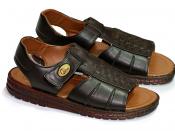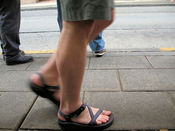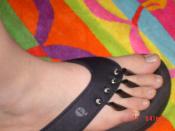MealsMeals begin in the room space between the meditation hall and the two tatami rooms in primary building A. All monks who have no special meal-time duty (cooking, setting the tables, etc.) arrive and wait for each other with their dish sets (usually between 3 and 6 monks on holidays and between 6 and 9 monks on normal days). These include five plastic bowls that decrease in size so that each bowl fits snugly into the next largest. The bowls and a set of chopsticks inside a cloth are wrapped with one of two large clothes. On top of this is are two folded clothes. One smaller, thinner cloth and topping it off is the second large cloth.
When everyone is there, they line up in ranked order from the West door, holding the dish sets with both hands. Everyone then makes a 90 degree bow together before proceeding out the West door.
If it is not lunch or dinner time and it is not raining, the monks turn right and exit the building through the Northern West exit continuing towards primary building B. The last person always shuts the door. If it is raining however, the turn left and exit through the Southern West door, where there is covering from the rain to cross to the other side. The last person in line shuts the door if it is not breakfast or if there was no zazen in the morning. The monks then continue walking alongside buildings, under the overhangs to avoid as much rain as possible. Primary building B's closest door is only used in the morning just after zazen. At that time one of the monks who has come ahead of the group stands at the right side of the entrance. The first monk in line will go to the right side of the entrance, turn around, and begin sliding off his sandals. As he begins to slide of his sandals, the next monk in line turns around and lines up next to beginning to do the same. As soon as the first monk steps up from the ground, the monk who was waiting by the side fixes the sandal alignment to make sure they right next to each other and that the backs of the sandals rest nicely against the wood of the building's front step. This process continues until everyone has entered and all the sandals are in a nice, neat line. As each monk gets through the doorway, he then proceeds through the section of the tatami meditation room that is not used during meditation and through down a couple steps, through an excessively dark, wooden-floored hallway, up two steps, turns left, and then makes an immediate right turn into the dining hall. The monk who was fixing the sandals closes all doors behind him.
For lunch, dinner, and holiday mornings, all the monks make a left turn when they reach the first door, and then turn right and procede to a second door which is directly in front of the dining hall. The same process continues to enter that door with the exception that no one is there to fix the sandals, so every one must individually try to make sure their sandals are very nice and neat. That door is left open, but after the last person in line enters the dining hall, that person must close the dining hall doors.
In the middle of the dining hall there are six 1' x 6' tables set up. Three in one line, and three in another. The two lines have a space of just under a foot betweeen them and, to close the space three 1' x 6' boards are laid across it creating one large, table, about 3' x 18'. At breakfast, the tables are bare, but for lunch and dinner there is a bowl or plate set out at each spot, containing the main dish for the meal. Beside each of the long sides of the table are laid thin mats. Everyone has an assigned spot at the table, sometimes varying depending on your duties during the day and during the meal.
The monks stay off the mat next to the table until everyone placed ahead of them has arrived. Then, they may step up and stand on the mat. When everyone is standing in their place on the mat, everyone bows in unison, sits down, and sets their dish set directly in front of them so that there is an equal distance between the edge of the table and the boards connecting the two lines of tables. They then get settled into the lotus or half lotus position.
They then begin chanting. Many have the sutra memorized, but those who don't have the first part memorized may follow along with books. If a monk is not holding a book his hands should be together, next to the chest, with the fingers pointed skyward. After a minute or two, while still chanting, the monks begin to set their places. If a monk was holding a sutra book, he first sets it down on the floor just between his legs. The dish set is then grabbed with both hands and placed on the left thigh. First they slide the chopstick cloth out, setting it handle side up in front of them, leaning up in the crutch where their legs cross. Then, the two cloths on top are taken off and placed on the right thigh: the larger one on the bottom this time. Then the cloth covering the bowls is unfolded. First the right corner is unfolder, followed by the left corner, the bottom corner, and then the top corner. The bowls are then grabbed all at once with the right hand, placing the index finger, fingernail-side down into the smallest bowl while grasping around the edge of the largest bowl with the other three fingers and the thumb. The bowl set is flipped with the right hand. After that the left hand grabs the largest bowl and sets it on the table. The same is done with the second largest bowl, set to the right of the largest bowl. At breakfast, the next three bowls are just set down together next to the second bowl. At other meals however, The middle sized bowl is grabbed with the left hand and the two smaller bowls are set next to the second bowl. The third bowl is then placed inside the two smallest bowls so that it is slightly raised. The placement of the bowls on the table also matters. During breakfast, the three are simply placed in a strait line next to each other with about 1cm between each bowl. They must also have an equal distance between the edge of the table and the boards. At lunch the extra bowl or plate for the main dish must be accounted for. The bowl or dish is moved just about a centimeter or two away from the middle board and the separation between the largest and second largest bowls becomes wider to accommodate while now leaving about 1cm between the main dish and both bowls. The chopsticks are then slid out from their cloth. The handle end is placed between two largest bowls and is angled about thirty degrees downward and rightward so that the last third on the tip end rests off of the table table. The cloth is then placed on the right thigh, on top of the other two clothes. After that, the cloth on the left thigh is folded up neatly (if one of the higher level monks sees a wrinkle in that fold, he may scold the monk and sometimes even hit him) and placed on the right thight topping off the four layers of cloth.
After this, one must fold his hands into the temples zazen position (where the left hand holds the right thumb and the fingers on the right hand are folded over those on the left). The chanting finishes soon and is followed by a series of bows (while still seated): two with the hands folded followed by one with the hands returning to the chest position.
In the middle of that process three baskets are lifted onto the far side of the table.
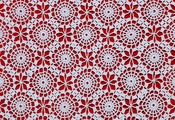
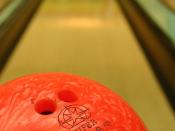
![[Portrait of Thelonious Monk and Howard McGhee, Minton's Playhouse, New York, N.Y., ca. Sept. 1947] (LOC)](https://s.writework.com/uploads/11/113782/portrait-thelonious-monk-and-howard-mcghee-minton-s-playhou-thumb.jpg)
